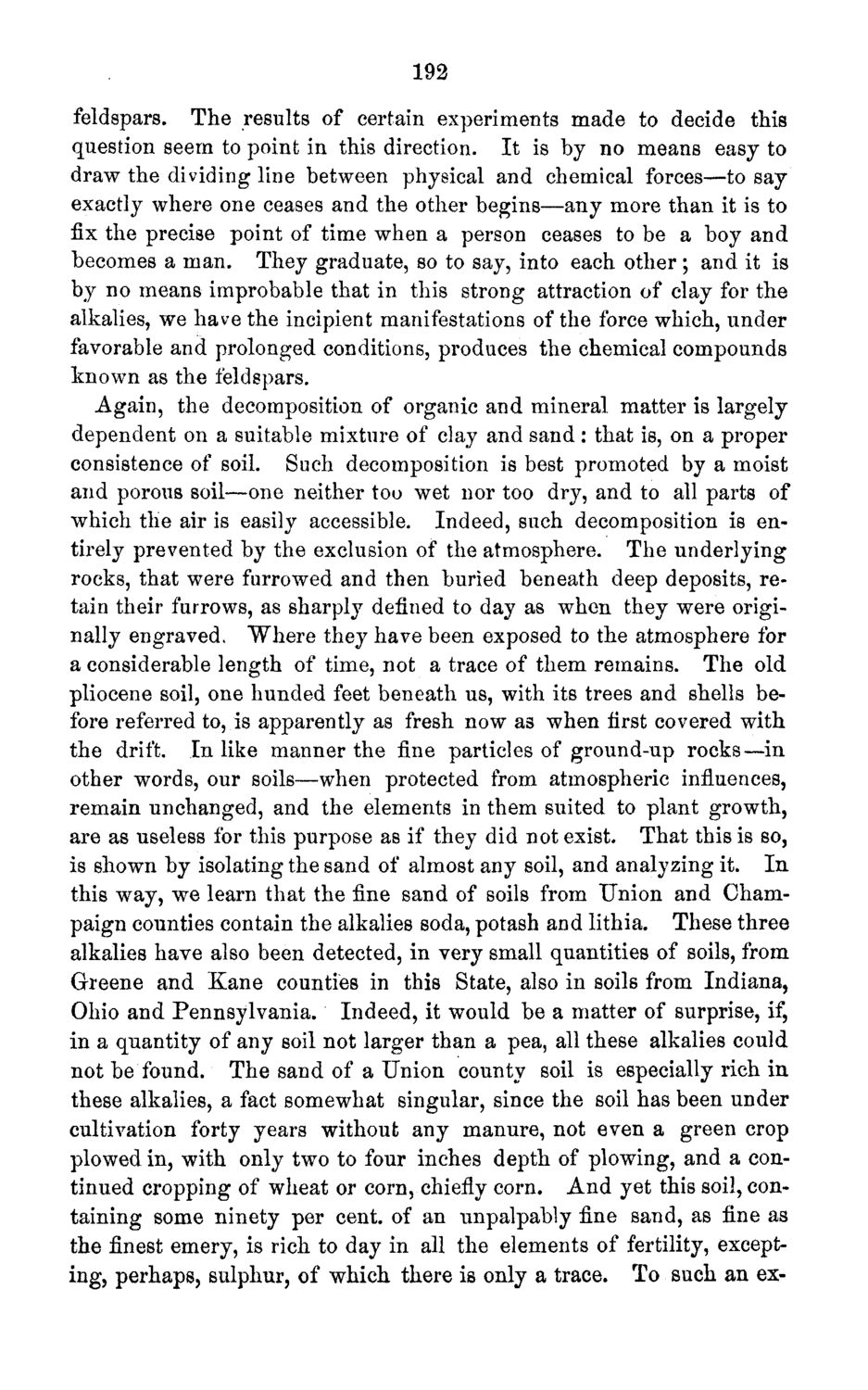| |
| |
Caption: Board of Trustees Minutes - 1871
This is a reduced-resolution page image for fast online browsing.

EXTRACTED TEXT FROM PAGE:
192 feldspars. The results of certain experiments made to decide this question seem to point in this direction. It is by no means easy to draw the dividing line between physical and chemical forces—to say exactly where one ceases and the other begins—any more than it is to fix the precise point of time when a person ceases to be a boy and becomes a man. They graduate, so to say, into each other ; and it is by no means improbable that in this strong attraction of clay for the alkalies, we have the incipient manifestations of the force which, under favorable and prolonged conditions, produces the chemical compounds known as the feldspars. Again, the decomposition of organic and mineral matter is largely dependent on a suitable mixture of clay and sand: that is, on a proper consistence of soil. Such decomposition is best promoted by a moist and porous soil—one neither too wet nor too dry, and to all parts of which the air is easily accessible. Indeed, such decomposition is entirely prevented by the exclusion of the atmosphere. The underlying rocks, that were furrowed and then buried beneath deep deposits, retain their furrows, as sharply defined to day as when they were originally engraved. Where they have been exposed to the atmosphere for a considerable length of time, not a trace of them remains. The old pliocene soil, one hunded feet beneath us, with its trees and shells before referred to, is apparently as fresh now as when first covered with the drift. In like manner the fine particles of ground-up rocks—in other words, our soils—when protected from atmospheric influences, remain unchanged, and the elements in them suited to plant growth, are as useless for this purpose as if they did not exist. That this is so, is shown by isolating the sand of almost any soil, and analyzing it. I n this way, we learn that the fine sand of soils from Union and Champaign counties contain the alkalies soda, potash and lithia. These three alkalies have also been detected, in very small quantities of soils, from Greene and Kane counties in this State, also in soils from Indiana, Ohio and Pennsylvania. Indeed, it would be a matter of surprise, if, in a quantity of any soil not larger than a pea, all these alkalies could not be found. The sand of a Union county soil is especially rich in these alkalies, a fact somewhat singular, since the soil has been under cultivation forty years without any manure, not even a green crop plowed in, with only two to four inches depth of plowing, and a continued cropping of wheat or corn, chiefly corn. And yet this soil, containing some ninety per cent, of an unpalpably fine sand, as fine as the finest emery, is rich to day in all the elements of fertility, excepting, perhaps, sulphur, of which there is only a trace. To such an ex-
| |